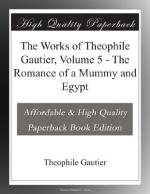|
This section contains 2,556 words (approx. 9 pages at 300 words per page) |

|
SOURCE: "The Destruction of the Artist in Gautier's Early Poetry," in Bulletin de la Société Théophile Gautier, No. 3, 1981, pp. 49-58.
In the following essay, Burnett describes the pattern of artistic self-destruction—creation of an ideal, desire for that ideal, and subsequent destruction—prevalent in many of Gautier's early poems.
In the concluding stanza of "Albertus" (1832), Théophile Gautier challenges the reader to decipher the "allégorie admirable et profonde" of his "légende théologique". This 1400 line compendium of romantic clichés recounts the saga of the witch, Véronique, who transforms herself into a seductive young woman. By chance, she sees a "fashionable", young, poet/painter, Albertus, and falls in love with him. She arranges to have him brought to her and seduces him after extracting a promise that he will sell his soul to have her. In the midst of their lovemaking, she and...
|
This section contains 2,556 words (approx. 9 pages at 300 words per page) |

|


